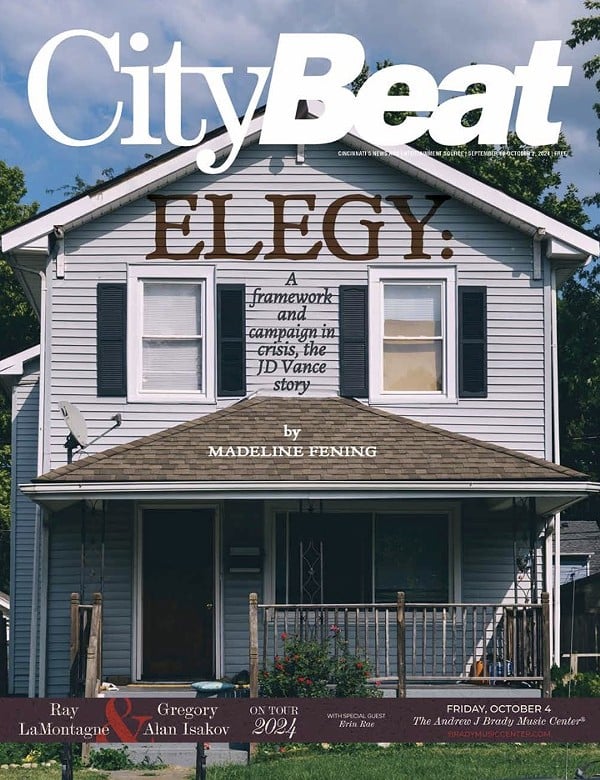The anti-gerrymandering question will appear on this November’s ballot, asking voters whether Ohio should establish a citizen-led redistricting commission to replace the elected official-led Ohio Redistricting Commission.
The Republican-controlled ballot board, led by Ohio Secretary of State Frank LaRose, crafted language attempting to portray the amendment as a kind of reverse gerrymandering — forcing lines to comply with a pre-arranged outcome. The state supreme court, also controlled by Republicans, mostly gave them a pass but insisted on two changes.
“And so that is our only purpose today,” LaRose said at the outset of the meeting, “to address those two issues that the court raised, and we will limit our work and our comments today to just those.”
One change has to do with making it clear citizens can express their opinions to the commission, and the other explains that the challenges of commission maps are not limited to questions of the proportionality standard.
LaRose proposed changes to both, but he didn’t start from scratch. Instead, he tweaked the existing provisions to make a handful of additional allowances. Democratic board members argued those changes were inadequate and proposed much broader revisions.
Republican members of the board, however, stuck with LaRose’s language. The secretary insisted more significant changes are inappropriate with ballots for overseas voters scheduled to be sent so soon.
“Given that we’ve got 48 hours to go,” LaRose argued. “I don’t want to risk making changes to what has already been approved by the highest court in the state, potentially creating an opportunity for another lawsuit that could delay ballots going out.”
Importantly, the entire debate has to do with the ballot language — i.e., the text voters will see when they step into the voting booth — rather than the language of the amendment.
“The substance of this amendment is not affected by the disingenuous attempt by politicians to rig the election on Issue One,” Citizens Not Politicians spokesman Chris Davey insisted after the hearing. “The ballot language is the ballot language, and Ohioans are going to see right through it. They’re smart. They understand what this issue is about.”
Proportionality
A core provision of the amendment is establishing ground rules to keep drafters from drawing maps that would unduly favor one party or the other. In this bid to avoid gerrymandering, it directs the commission to look back at the past six years of statewide elections to determine what share of the vote major political parties received. Commissioners would then divvy up the districts so a proportional share would favor one party or the other.Obviously, candidates would still have to run a campaign and convince voters to support them, but amendment backers argue their approach could make lopsided outcomes less likely.
In the past decade, Ohio voters have favored Republicans over Democrats by a 56-43 margin on average. But Ohio’s U.S. House delegation is 2/3 Republican, and in the Ohio General Assembly, Republicans hold 68% of House seats and 79% of Senate seats.
The initial ballot language held that individuals could only challenge “the proportionality standard applied by the commission” in court. The state supreme court justices determined that was too narrow.
In response, LaRose lifted language verbatim from the court opinion to include the improper consideration of an elected official’s residence or a senator’s term in office when drawing maps as grounds for a lawsuit.
State Sen. Paula Hicks-Hudson, D-Toledo, offered a different version. Her language enumerated all the same kinds of cases but instead of emphasizing the limits on eligible court challenges, it emphasized how those challenges place limits on the commission.
“This language, I believe, more accurately reflects the language that was put into the petitions that were circulated,” she argued.
Communication
The proposed amendment lays out at an extensive series of public redistricting commission hearings, but it also takes steps to prohibit backroom deals. Republican ballot board members seized on the latter.The current redistricting system, which cemented large supermajorities in the Ohio statehouse, also requires several public hearings. But critics argue the public-facing side of the process is just theater, and partisan commission members do the real work of hammering out their plans behind closed doors.
To that end, Issue 1 would prohibit commissioners and staffers from communicating with people about the redistricting process outside of a public forum and prohibit members of the public from attempting to contact commissioners or staffers privately to influence the outcome.
The ballot board cast those restrictions as “limit(ing) the right of Ohio citizens to freely express their opinions,” and the state supreme court let it stand. But the justices added that by leaving out the public’s opportunities to communicate with the commission at public hearings or through an online portal, “we conclude that the ballot board drifted into argumentation.”
For this provision, LaRose proposed a sandwich. The existing language about limiting expression remains in place, with acknowledgment the public can weigh in at hearings or online, followed by a reiterating the amendment would “forbid” communication “outside of those contexts.”
Hicks-Hudson argued that the presentation got the amendment’s intent backward.
“Words matter,” she argued. “It is very clear to me that this language, again, is designed for a specific outcome.”
Disingenuous
LaRose’s proposed language for both provisions was adopted on a party-line vote. Hicks-Hudson’s proposals were rejected again along party lines. She also proposed changing the title and four other provisions laid out in the ballot language. LaRose pushed back, again invoking the short timeline for getting ballots to overseas voters and the possibility of further lawsuits.“I think it would be dangerous at this point to take that chance,” he said, “given that this is language that has already been approved by the court.”
Hicks-Hudson dismissed those arguments as “disingenuous” and said she was “ashamed of us as elected officials” for approving language calibrated to influence voters’ decision-making.
Her fellow ballot board member, state Rep. Terrence Upchurch, D-Cleveland, argued sending voters slanted ballot language was just as bad as risking delay.
“I think it is equally dangerous to adopt language and put it on the ballot that would mislead voters and put voters in the position to where they are confused to sway the outcome of what the election can be,” he said. “I’d rather push this thing to the fourth quarter, to the last minute on the clock, to make sure that we do it right and do it with integrity.”
This story was originally published by the Ohio Capital Journal and republished here with permission.







